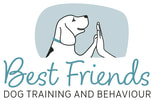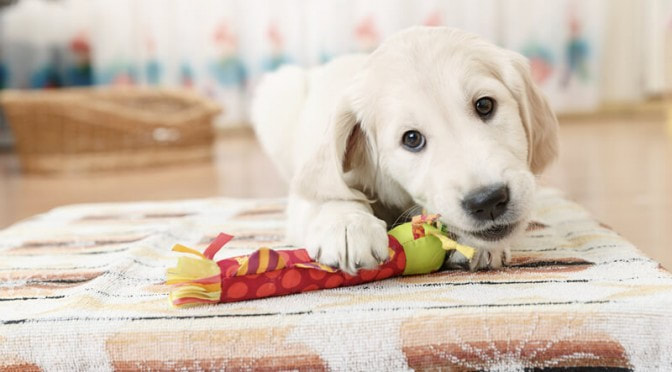Puppies explore the world with their mouths. Biting is normal puppy behaviour. Sometimes, however, puppies become hyper-stimulated and start biting and nipping at our hands or ankles or clothes. We can then look at preventing the behaviour in the first place and, if it does occur, learn how to give the puppy feedback and change the behaviour.
Puppy biting can become a problem because the puppy is:
Puppy biting can become a problem because the puppy is:
- Overtired
- Under-exercised
- Hungry
- Teething/in pain
- Lacking mental stimulation
- Needing a good chewing outlet
- Has too much free, unchallenging and unsupervised time
- Plenty of quiet sleep and rest: Puppies need a lot of sleep, up to 16 hours a day. Overtired puppies tend to bite more. Ensure your puppy gets uninterrupted sleep during the day in a quiet undisturbed place such as his crate.
- Physical and mental exercise: Make sure your puppy gets enough physical and mental exercise by staying engaged with your puppy and offering a variety of activities and challenges during his awake time.
- Really good chewing opportunities: Make sure you have really valuable chew items for your puppy that he loves. Audition different types of chew items to see what your puppy loves best and make them available to your puppy.
- Do a clock watch: Try to assess when the over-stimulated behaviour takes place. For example, if it happens 30 minutes after you take your puppy out of the crate, the next time you take him out of the crate, put him back after 20 minutes.
- Set up situations where your puppy always bites as training opportunities. For example, if your puppy always bites your feet when you go up the stairs, click and treat your puppy when you approach the stairs before she has a chance to bite. As you walk up the stairs, pre-empt any biting by clicking and treating your puppy for not biting at your feet.
- Don’t handle your puppy when she is over-aroused: Your puppy can’t learn if she is too aroused. And if you pick up your puppy when she doesn’t want to be handled, she may decide to bite you and you may decide to put her down. You have just taught your puppy that biting works!
- Spend lots of time on calm handling exercises: Teach your puppy that hands coming towards him are a good thing and an opportunity for reinforcement, not for biting. When your puppy is relaxed and welcomes your touch, handle your puppy gently and briefly, and then click and treat. Teach your puppy that hands coming towards her signal good things.
- Saying ouch or yelp in a loud voice: This is an “old school” method for stopping puppy biting. It is intended to mimic the yelp another puppy in the litter gives if a sibling bites too hard. Often it has no effect and, for some if not most puppies, it just makes them more wild and causes them to bite harder. It could also scare timid puppies.
- Redirect to a toy or another item or ask for a behaviour like sit: Redirecting to a toy may work for some puppies. Just be careful not to build a “behaviour chain”, i.e. puppy bites, you redirect to a toy and the puppy gets rewarded for biting you by playing with the toy. Or, puppy bites, and you ask him to sit and feed a treat. Puppy then gets rewarded for biting and sitting. The biting is built into the chain of behaviour and therefore unlikely to stop. As above, your best bet is prevention – bring out the toy or the clicker and treats and tire out your puppy by having fun playing and training before the biting starts.
- Say “too bad” and walk away – and then teach your puppy what DOES work to get your attention: We never want to use a time-out as punishment but you can calmly and neutrally use this method if your puppy’s biting is over the top. When your puppy bites, immediately say “too bad” and walk away. You are teaching your puppy that the consequence for her teeth on your skin is the removal of your attention. Remove yourself from the room for just a minute. When you return gently start interacting again and offer a soft plush toy as something to bite instead of your hand. Now you want to teach your puppy what does work to get and keep your attention and have you play with him. Catch your puppy making good choices, like grabbing the toy, and then reinforce that good choice by playing with your puppy in an exciting and fun way with the toy!


